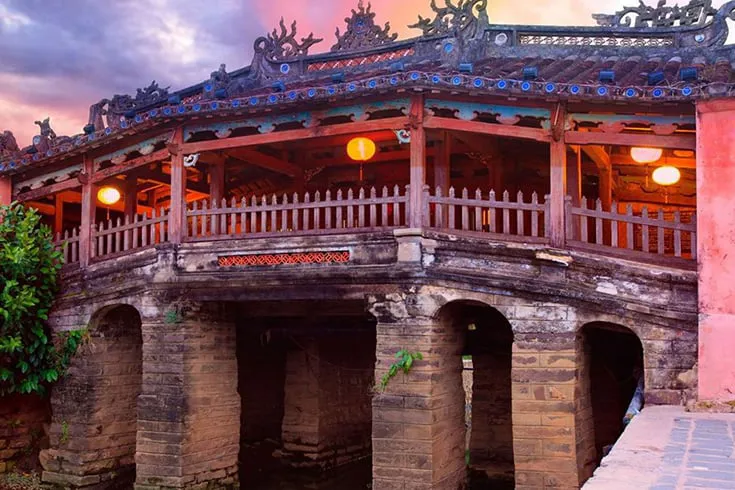
Discover Hoi An's most enduring and photographed symbol, the magnificent Japanese Covered Bridge (Chùa Cầu). This historical gem, located right in the heart of the Ancient Town, serves as a poignant reminder of the Japanese merchant community that resided and traded here centuries ago. Originally constructed in the early 17th century, its primary purpose was to connect the Japanese quarter with the main Chinese districts on the other side of a small canal, facilitating trade and community interaction.
What makes this beautiful, ornate wooden bridge particularly unique is the small Buddhist temple (Chùa) built onto its northern side, hence its Vietnamese name Chùa Cầu (Pagoda-Bridge). Admire the intricate carvings adorning the structure, including statues of dogs and monkeys at opposite ends, symbolizing the years the bridge's construction started and finished according to the zodiac. Its elegant roof shelters pedestrians from sun and rain, making it a pleasant crossing point and a marvel of historical architecture reflecting clear Japanese design elements.
As a must-see attraction within the UNESCO World Heritage site, the Japanese Covered Bridge is perfect for capturing memorable photos and understanding Hoi An's multicultural trading past. Access to physically walk across the bridge and view the temple inside is typically included as one of the stops covered by the Hoi An Ancient Town entrance ticket. It stands today not just as a bridge, but as a cherished icon representing the rich history and cultural fusion of Hoi An.